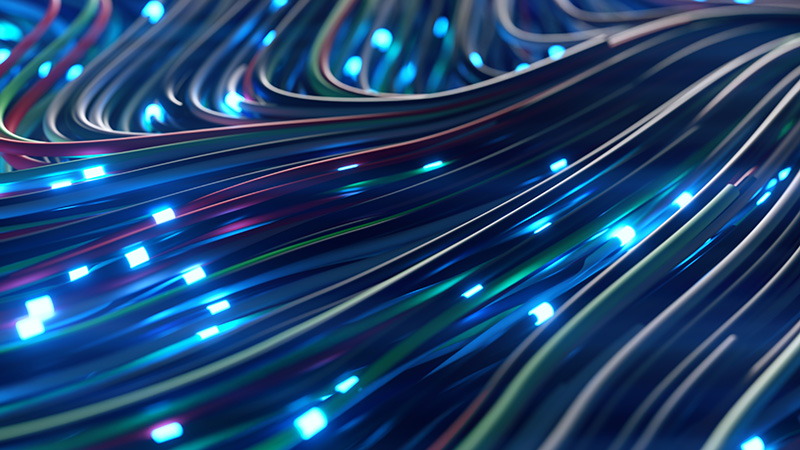AI is transforming industries and reshaping our energy demands. Behind every innovation lies a growing network of AI data centers, each consuming massive amounts of electricity. This surge is creating a significant energy bottleneck, placing unprecedented stress on the U.S. electric grid, which wasn’t designed for such high-load, dynamic demands.
In this article, we’ll break down the emerging strain on power grid infrastructure, identify the most vulnerable regions, and explore emerging solutions.
Contents
The AI Data Center Boom
AI Workloads vs. Traditional Needs
Strain on Infrastructure
Vulnerable Hotspots
Solutions
The AI Data Center Boom: A Rapid Shift in Electricity Demand
Once characterized by steady growth, the U.S. electric grid is now entering an era of volatility. According to the U.S. Department of Energy (DOE):
- In 2023, data centers used roughly 4.4% of the nation's electricity.
- By 2030, that figure could reach 9–12%—or even more.
Much of this increase comes from training and running large language models. These processes consume far more power than traditional computing tasks, straining a grid not designed for such loads.
This skyrocketing electricity demand is clashing with the slow pace of grid modernization, creating a pressing challenge.
AI Workloads Vs. Traditional Data Center Needs
In essence, AI workloads are far more power-hungry than traditional data center tasks due to their reliance on specialized, high-power processors performing complex computations on large datasets.
This fundamental difference drives the need for data centers with significantly higher power capacity, more advanced cooling infrastructure, and high-speed networking capabilities.
| Feature |
AI Data Centers |
Traditional Data Centers |
| Processing Units |
GPUs, TPUs, AI chips |
CPUs |
| Rack Power |
40 - 120kW+ |
5 - 15kW |
| Cooling |
Liquid + Air |
Primarily Air |
| Networking |
High-bandwidth, low-latency |
Standard ethernet |
| Storage |
NVMe, parallel systems |
HDDs, NAS, SAN |
| Focus |
Unstructured data |
Structured + unstructured |
| Cost/Energy |
Higher |
Lower |
Strain on Infrastructure: A Grid Under Pressure
Despite rapid growth in renewable energy and battery storage, these power sources alone cannot fully support the 24/7 demands of AI data centers. These facilities introduce unique challenges to the power grid, including:
Transmission Bottlenecks
Transmission infrastructure—the "highways" that carry power across states—is outdated and insufficient for current needs. Upgrades face regulatory hurdles and long permitting processes, often delaying new power delivery by years. Without significant investment, this limits the ability to shift renewable power from areas of abundance to data center hotspots.
Grid Stability Concerns
The grid wasn’t built to handle such heavy and unpredictable loads, and power-ready sites are becoming scarce. AI workloads in particular shift rapidly, creating instability and demanding flexibility the current infrastructure struggles to provide.
Competition for Power
AI isn’t the only sector demanding more electricity. Transport, manufacturing, and heating also need more power than ever before with the electrification and digitalization of many industries. This convergence is heightening competition for power and creating new regional bottlenecks.
Regional Hotspots: Where the Grid is Most Vulnerable
Although AI data centers are spreading nationwide, two regions face outsized challenges:
Known as "Data Center Alley," this region hosts about 70% of global internet traffic. Dominion Energy expects demand here to double by 2039, largely driven by data centers. However, limited grid capacity may result in years-long power access delays.
Texas is rapidly becoming another flashpoint. AI and cryptocurrency mining have led the Electric Reliability Council of Texas ERCOT to forecast that grid demand may double by 2030. With grid reliability issues and extreme weather risks, Texas's grid remains fragile.
In both regions, solutions like new natural gas plants, colocation of generation and data centers, and demand response programs are being explored, but major hurdles remain.
Can Solutions Keep Up?
Efficient data center designs can mitigate some of the load. Key strategies include:
Energy Efficiency
Improving data center design and operations can reduce power needs. Techniques include:
- Advanced cooling systems
- AI-optimized chips
- Smart workload scheduling
Still, these optimizations won’t fully neutralize demand growth.
Renewable Energy and Storage
Massive investments in solar, wind, and battery storage are underway. For instance, Texas leads in solar additions, and utility-scale battery storage hit record levels in 2024–2025. Still, renewable integration is hampered by transmission constraints and renewable variability.
Advanced Technologies
Emerging solutions like small modular nuclear reactors (SMRs) and enhanced geothermal systems (EGS) offer promise for firm, clean power. Widespread deployment, however, is unlikely before the mid-2030s.
Regulatory Modernization
Federal and state agencies, including the Federal Energy Regulatory Commission (FERC) and the North American Electric Reliability Corporation (NERC), are crafting new rules to address co-location, grid reliability, and large load integration. These efforts will help streamline grid connections and improve stability but must scale quickly to keep up with AI’s pace.
Final Thoughts
Balancing AI innovation with grid reliability is one of the most urgent infrastructure challenges of the decade. It will require:
- Smarter, more efficient data centers
- Accelerated grid infrastructure upgrades
- Forward-thinking regulatory reforms
- Breakthrough clean energy technologies
To stay ahead of this fast-moving landscape, developers, investors, and suppliers need better visibility into market dynamics.
Gain your edge with the Acres Data Center Index. Use it to identify emerging markets, anticipate competitor moves, and forecast business impact—before the rest of the market catches on.
Connect with our sales team to see how the Acres Data Center Index can power your data center strategy.
